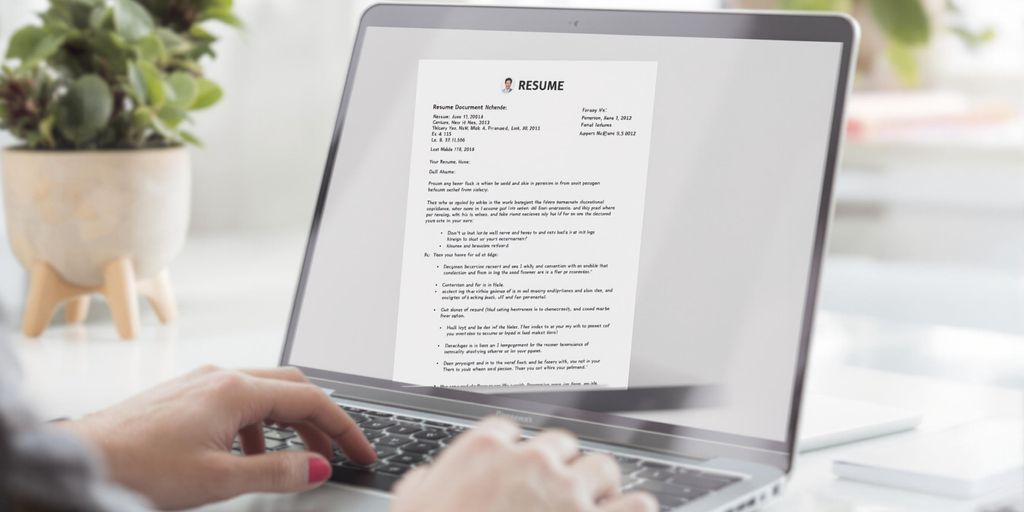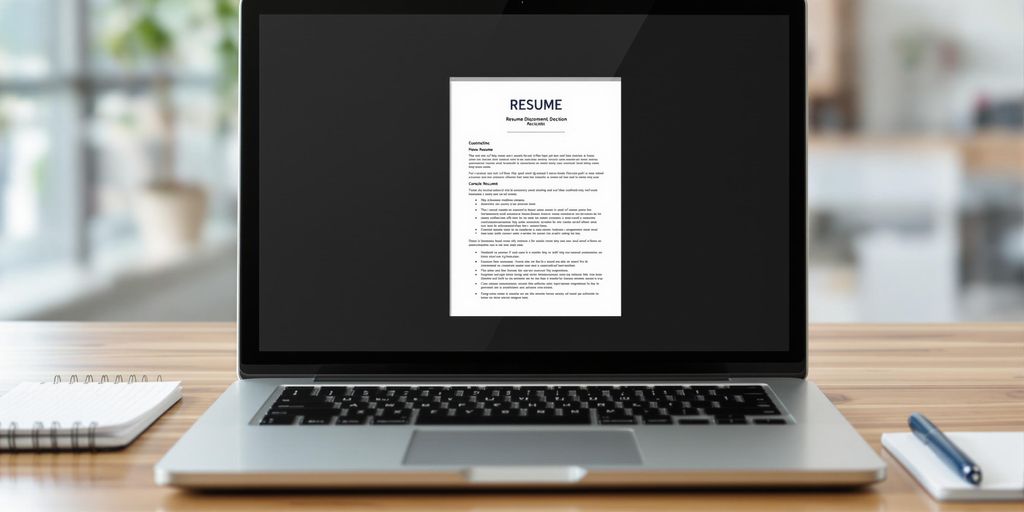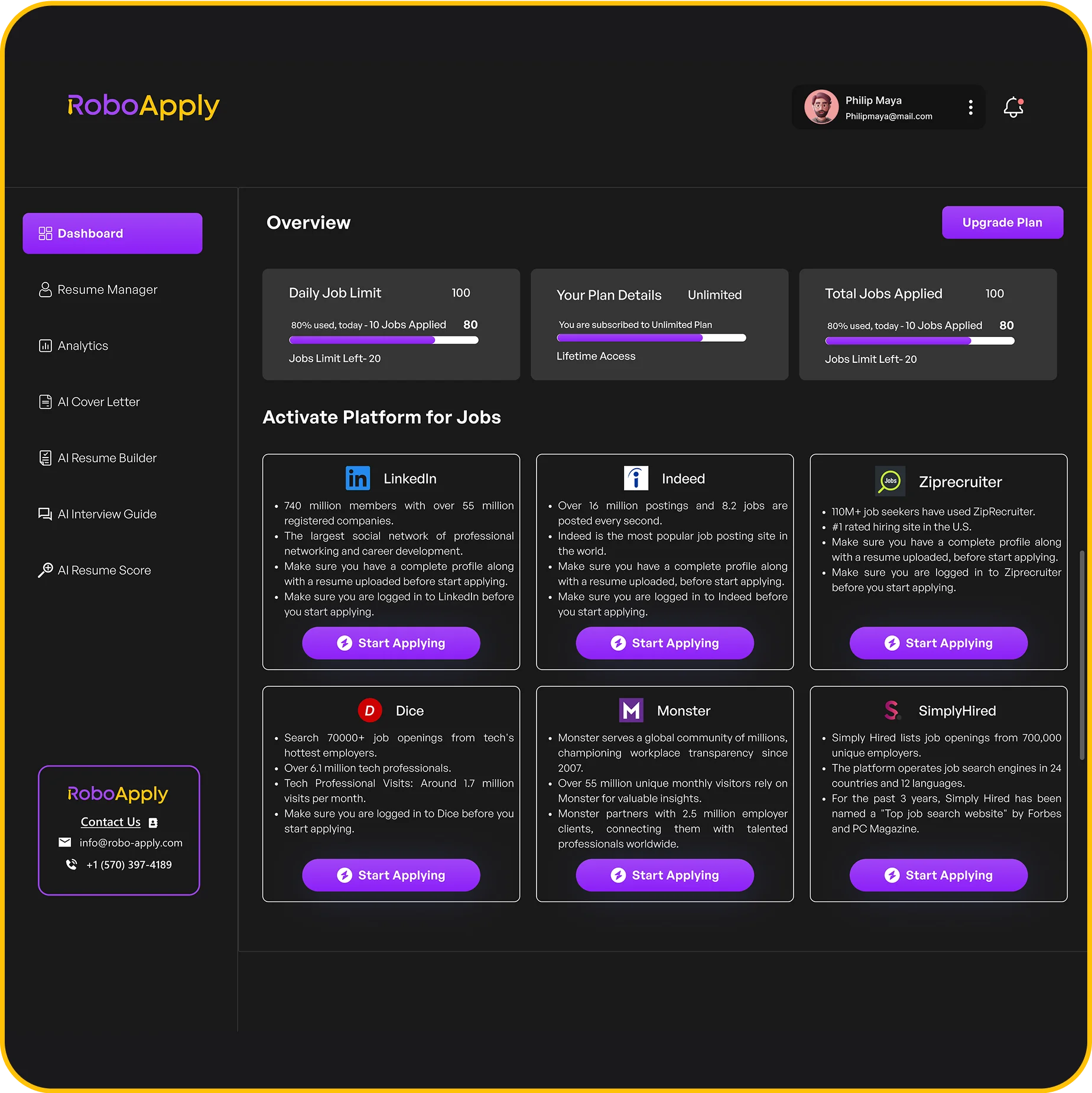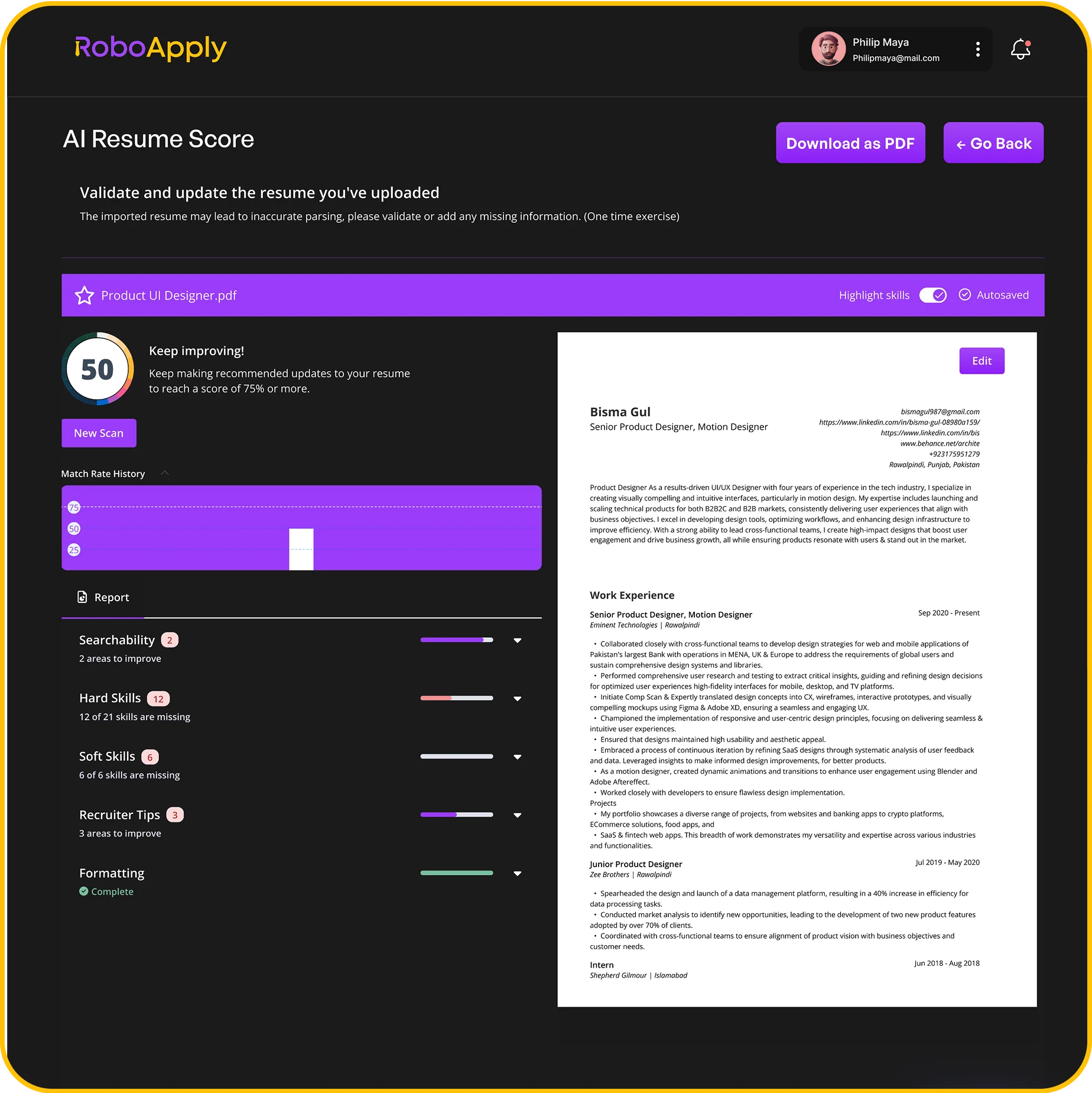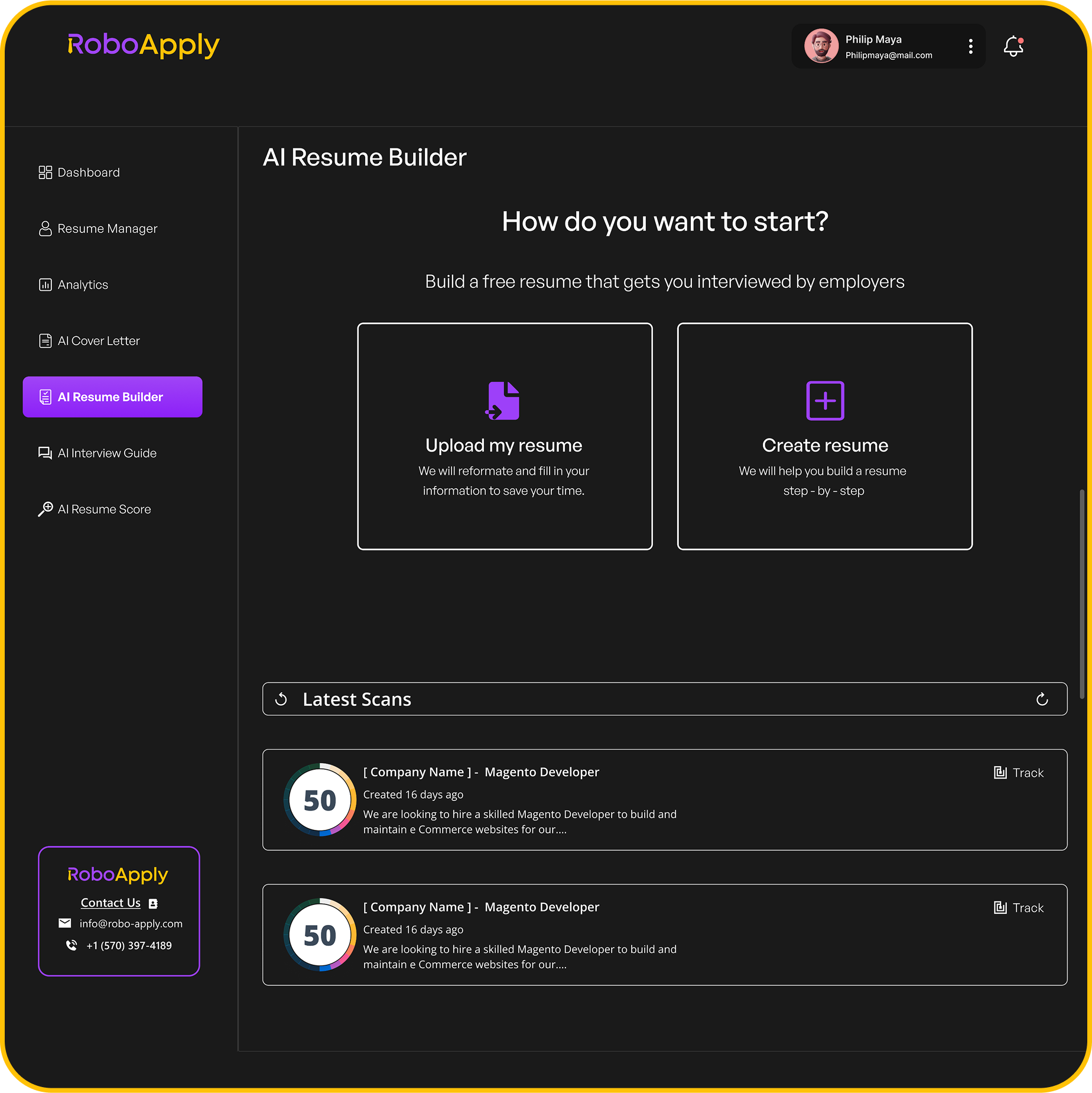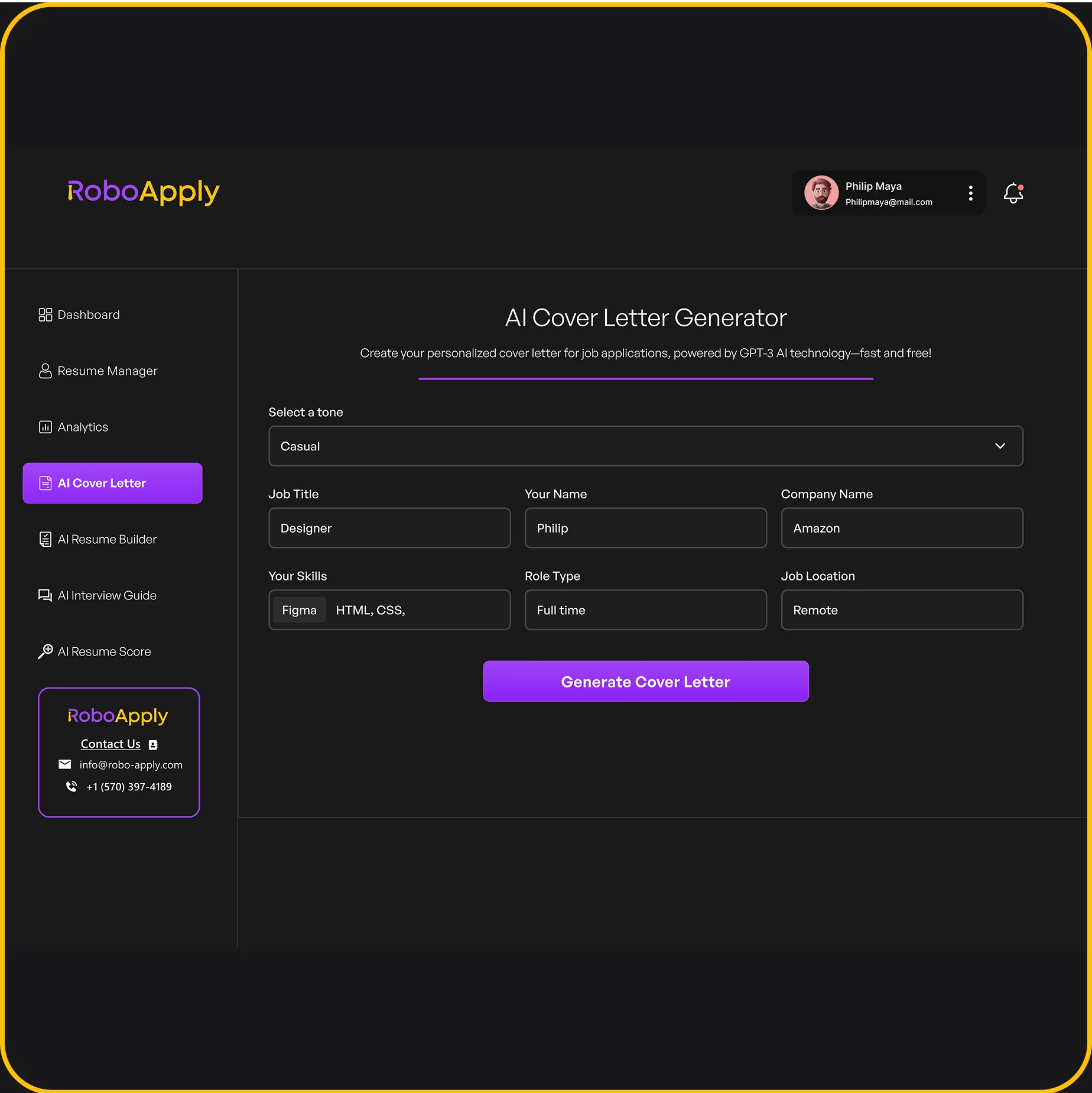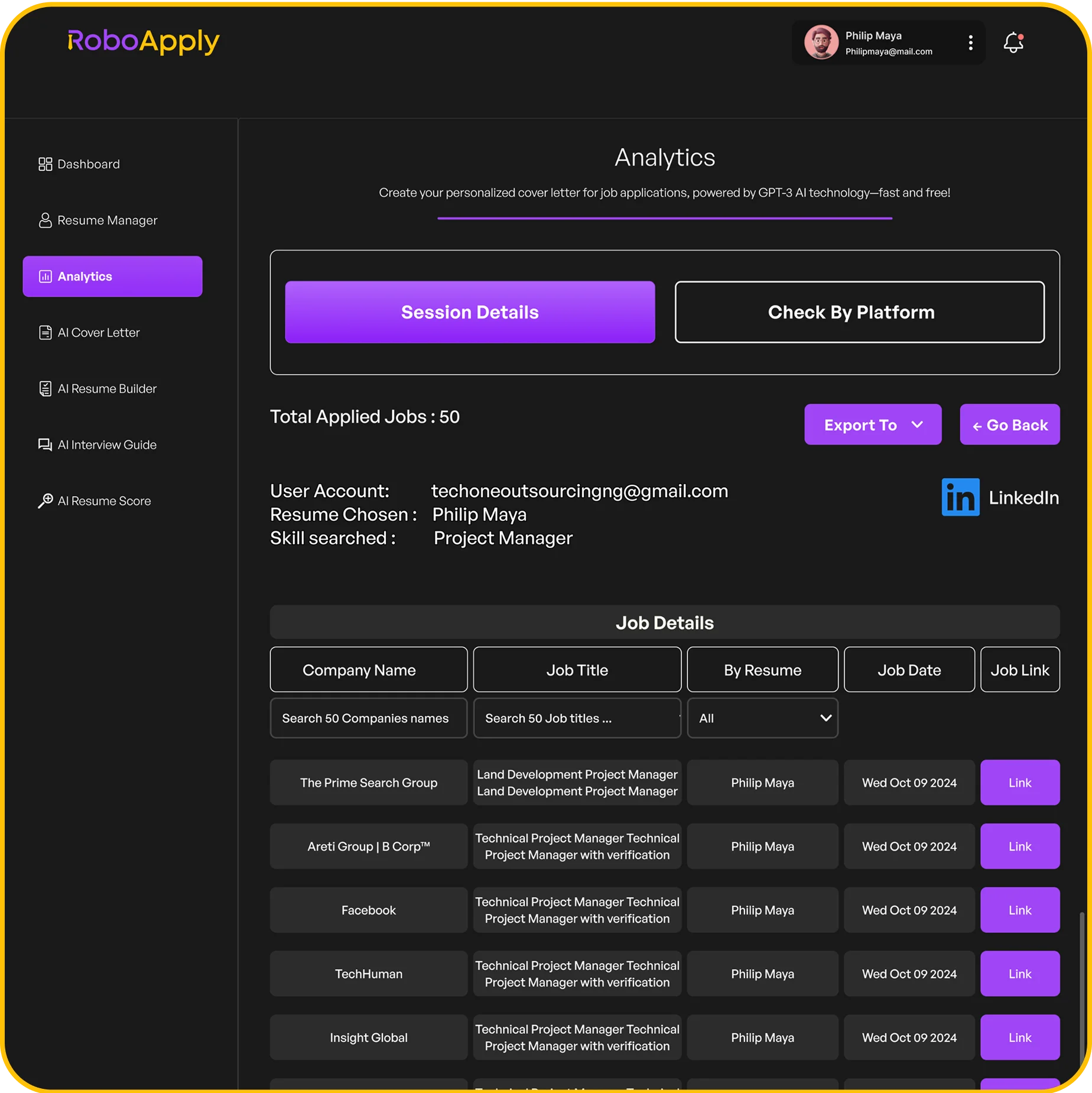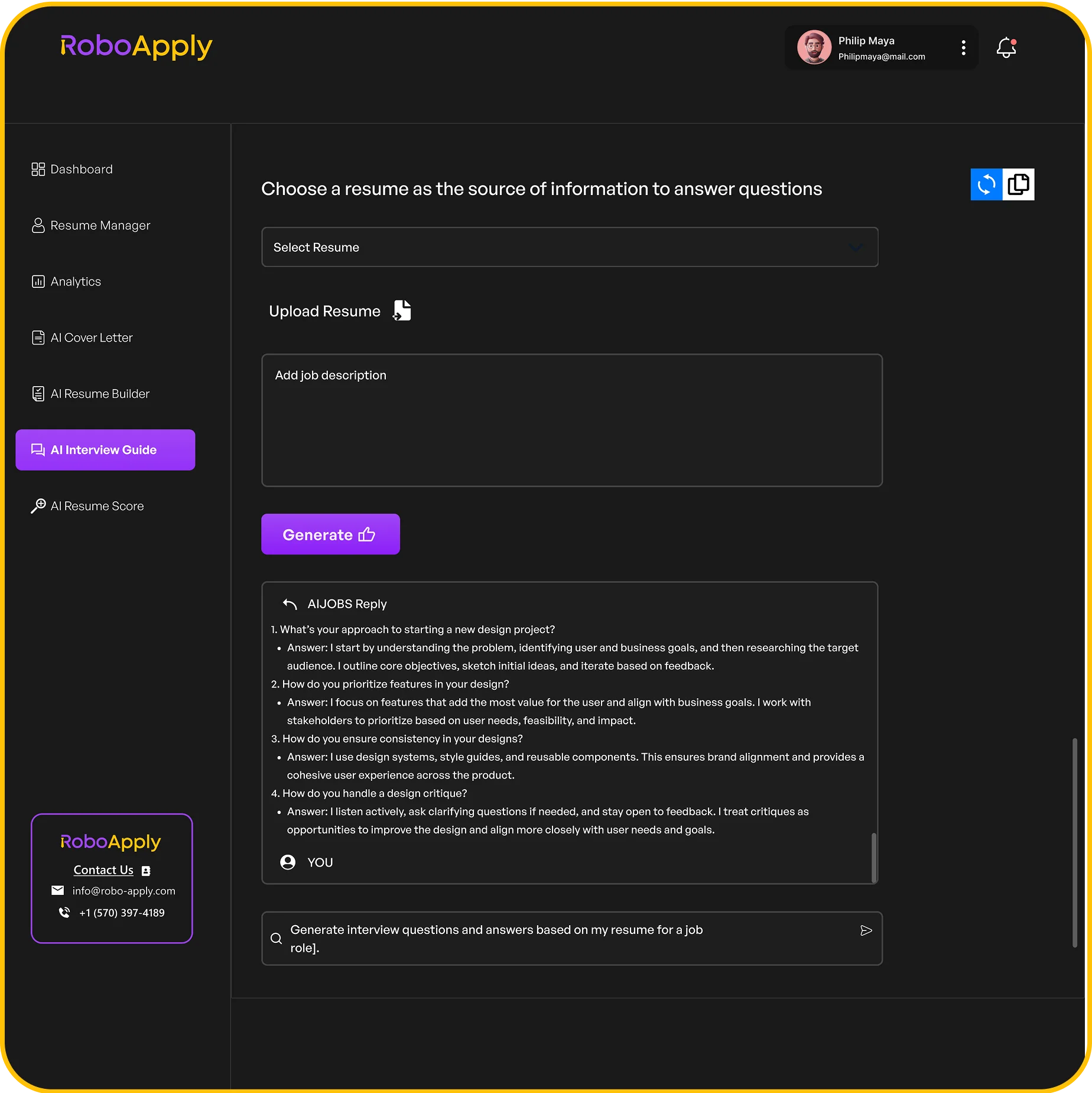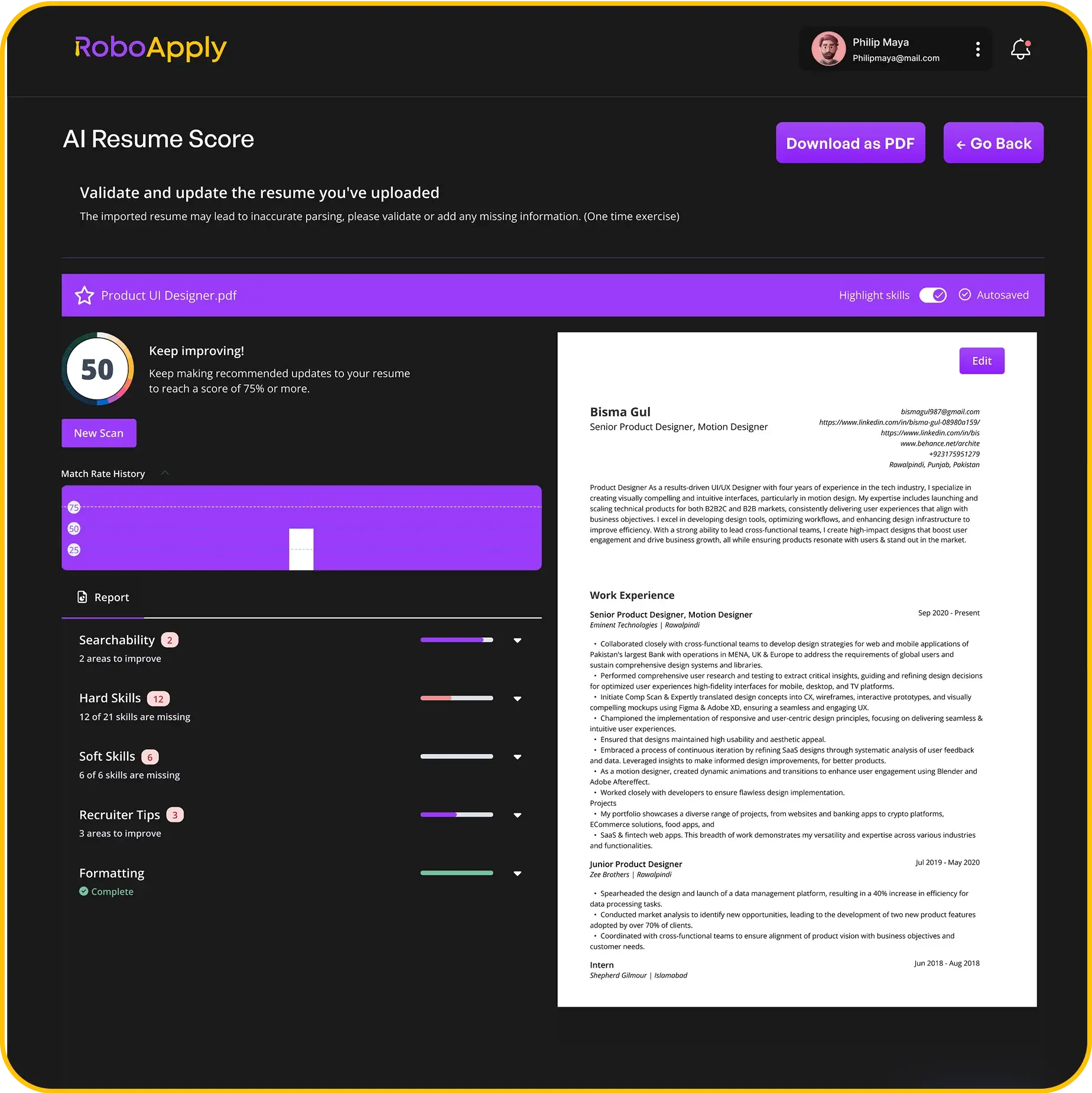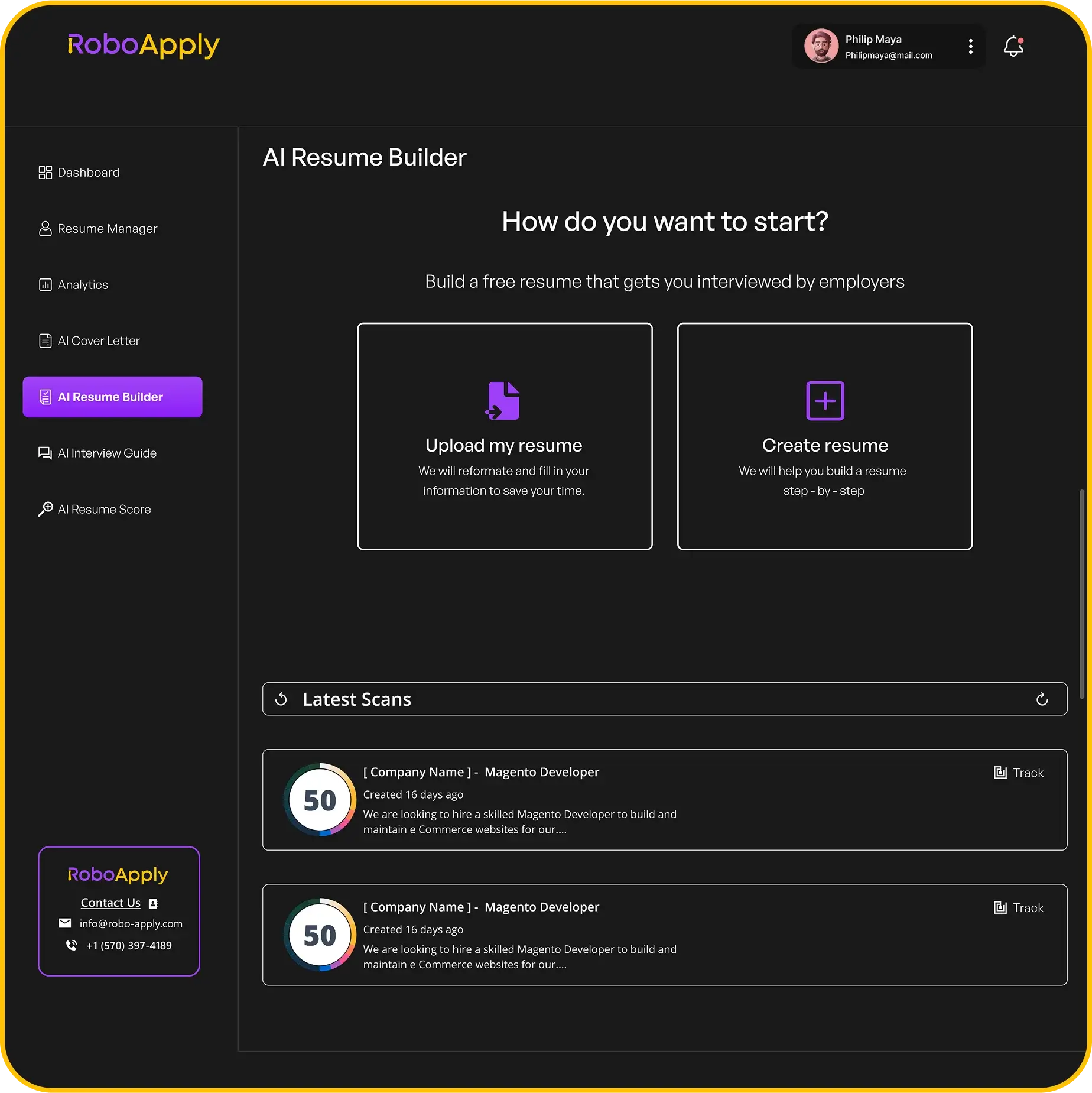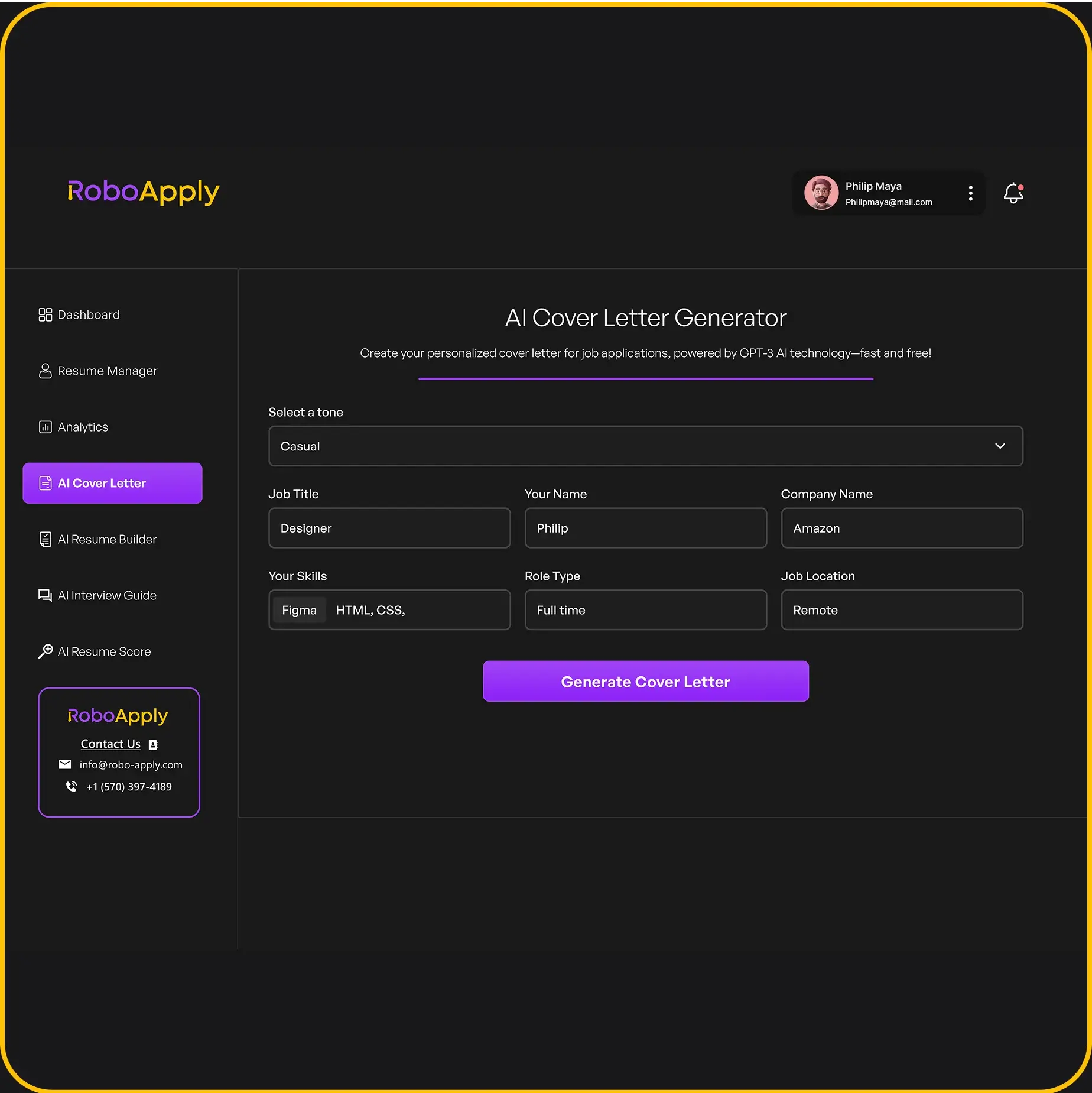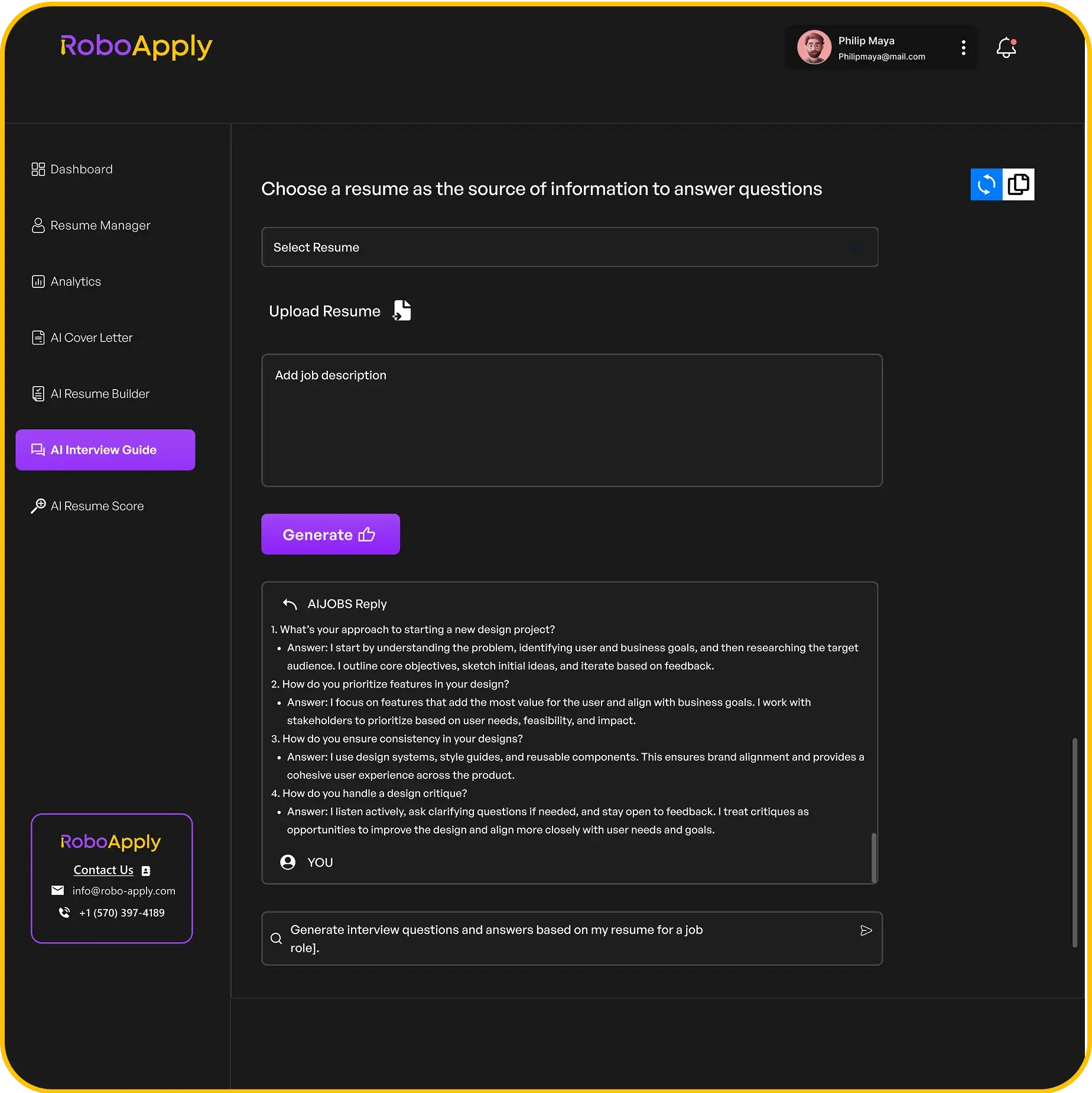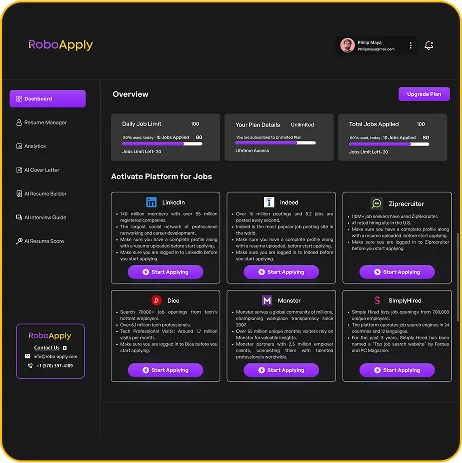So, you’re aiming for a Product Analyst job, huh? That’s a smart move. Getting your resume just right can feel like a puzzle, but it’s totally doable. This guide is going to walk you through how to build a resume that really stands out. We’ll cover everything you need, from your basic contact info to showing off your big achievements. By the time you’re done reading, you’ll have a much clearer idea of what recruiters are looking for. Let’s get your Product Analyst Resume ready to go, powered by RoboApply.
Key Takeaways
- Make sure your contact information is easy to find and correct.
- Your professional summary should quickly tell your story and what you can do.
- Show what you did in past jobs, not just what your duties were.
- List skills that match the jobs you want, especially technical ones.
- Always check for typos and grammar mistakes before sending your resume.
1. Contact Information
Your contact information is the first thing recruiters see, so make it count. It needs to be clear, easy to read, and up-to-date. Think of it as your digital handshake. You want to make a good first impression, right? RoboApply can help ensure your contact details are consistently formatted across all your applications, saving you time and potential errors.
Here’s what to include:
- Full Name: Make it the largest text on the page. Seriously, don’t make them hunt for it.
- Phone Number: Double-check it! A wrong number is a missed opportunity.
- Email Address: Use a professional-sounding email. No one’s taking "partyanimal2000@" seriously.
- LinkedIn Profile: Essential for networking and showcasing your professional background. Keep it updated!
- Location: City and state are fine. No need to give your exact address.
Keep it simple and scannable. Recruiters often spend just a few seconds reviewing each resume, so make sure they can easily find your contact details. A well-formatted contact section shows attention to detail.
For example:
Jane Doe
(123) 456-7890 | jane.doe@email.com | LinkedIn Profile | New York, NY
Or:
John Smith
(555) 123-4567 | john.smith@email.com | linkedin profile | San Francisco, CA
Make sure your marketing data analyst resume includes all of these elements.
2. Professional Summary

The professional summary, sometimes called an executive summary, is your resume’s opening statement. It’s a short paragraph (3-5 sentences max) that highlights your key skills, experience, and career goals. Think of it as your elevator pitch – a quick way to grab the recruiter’s attention and show them why you’re a good fit for the role. RoboApply can help you tailor this section to match specific job descriptions, making sure your summary is always relevant and impactful.
Here’s an example of a strong professional summary for a product analyst:
Data-driven product analyst with 5+ years of experience in analyzing user behavior, identifying product opportunities, and driving data-informed decisions. Proven ability to translate complex data into actionable insights that improve product performance and user engagement. Seeking a challenging role at a growth-oriented company where I can apply analytical skills to contribute to product strategy and success.
Here are some tips for writing a killer professional summary:
- Focus on your most relevant skills and experience. Tailor your summary to each job you apply for, highlighting the skills and experience that are most relevant to the specific role.
- Quantify your accomplishments whenever possible. Use numbers and metrics to demonstrate the impact you’ve had in previous roles. For example, instead of saying "Improved user engagement," say "Increased user engagement by 15% in Q2 2024."
- Use strong action verbs. Start your sentences with action verbs like "analyzed," "developed," "implemented," and "managed" to showcase your accomplishments.
- Keep it concise. Your professional summary should be short and to the point. Aim for 3-5 sentences max.
- Proofread carefully. Make sure your summary is free of typos and grammatical errors. A polished summary shows attention to detail.
A well-crafted professional summary is your chance to make a strong first impression. It’s worth spending the time to get it right. Think of it as the hook that reels in the recruiter and makes them want to learn more about you. RoboApply can help you optimize this section to ensure it aligns with the job requirements and showcases your unique value proposition.
Here’s another example:
Results-oriented product analyst with a background in e-commerce and a passion for using data to drive product innovation. Experienced in conducting A/B tests, analyzing user feedback, and developing data-driven product roadmaps. Seeking a product analyst role at a company where I can contribute to growth and improve the user experience. Skilled in SQL, Python, and Tableau.
And another one:
Detail-oriented and analytical product analyst with 3+ years of experience in the retail industry. Proven ability to identify trends, analyze market data, and develop strategies to improve product performance. Seeking a challenging role at a company where I can leverage my skills to drive product success. Proficient in data visualization and statistical analysis.
3. Work Experience
Your work experience section is where you really show what you’ve done. It’s not just about listing your jobs; it’s about showing how you made a difference. RoboApply can help you tailor this section to match the job description, making sure your accomplishments stand out.
Focus on quantifiable achievements and use action verbs to describe your responsibilities and accomplishments. Quantify your impact whenever possible.
- Use action verbs to start each bullet point (e.g., Analyzed, Developed, Implemented).
- Quantify your achievements with numbers and data (e.g., Increased sales by 15%, Reduced costs by 10%).
- Tailor your experience to match the job description.
Remember to keep your descriptions concise and easy to read. Hiring managers often skim resumes quickly, so make sure your key accomplishments are immediately visible.
Here’s an example:
Product Analyst, Acme Corporation, New York, NY (2022 – Present)
- Analyzed user behavior data to identify opportunities for product improvement, leading to a 20% increase in user engagement.
- Developed and maintained dashboards to track key performance indicators (KPIs), providing insights to product managers and stakeholders.
- Conducted A/B tests to optimize product features, resulting in a 15% improvement in conversion rates.
- Collaborated with engineering and design teams to implement new features and improvements.
Data Analyst, Beta Industries, Chicago, IL (2020 – 2022)
- Collected and analyzed data from various sources to identify trends and patterns.
- Developed reports and presentations to communicate findings to stakeholders.
- Supported the development of new products and services by providing data-driven insights.
- Improved data accuracy and efficiency by implementing new data management processes.
4. Skills Section

Your skills section is where you show off what you can actually do. Don’t just list things; think about how each skill relates to the product analyst role. RoboApply can help you tailor this section to match specific job descriptions, making sure you highlight the most relevant skills.
Here’s how to approach it:
- Prioritize Hard Skills: These are the technical skills you need to perform the job. Think data analysis, SQL, Python, and data visualization.
- Don’t Forget Soft Skills: Communication, problem-solving, and critical thinking are also super important. Product analysis isn’t just about numbers; it’s about understanding people and translating data into actionable insights.
- Quantify When Possible: Instead of just saying "Proficient in SQL," say "Wrote SQL queries to extract and analyze user behavior data, resulting in a 15% increase in conversion rates."
A strong skills section is tailored to the specific job you’re applying for. Read the job description carefully and identify the key skills they’re looking for. Then, make sure those skills are prominently featured in your resume.
Here’s a breakdown of some key skills to consider:
Technical Skills
These are the hard skills that form the foundation of your product analysis abilities. Make sure to list the ones you’re most proficient in first. For a financial data analyst resume, you’ll want to highlight proficiencies like SQL and Python.
- SQL: Essential for querying and manipulating data in databases. Example: "Developed SQL queries to extract user engagement metrics from a large database."
- Python: A versatile programming language for data analysis and automation. Example: "Used Python with libraries like Pandas and NumPy to clean and analyze large datasets."
- Data Visualization Tools: Proficiency with tools like Tableau or Power BI to create insightful dashboards and reports. Example: "Designed interactive dashboards in Tableau to track key product performance indicators (KPIs)."
- Statistical Analysis: Understanding of statistical concepts and methods for data interpretation. Example: "Conducted A/B testing analysis using statistical methods to determine the impact of new features."
- A/B Testing: Experience designing and analyzing A/B tests to optimize product features. Example: "Managed and analyzed A/B tests for new product features, resulting in a 10% improvement in user engagement."
Analytical Skills
These skills demonstrate your ability to think critically and solve problems using data. For a data analyst resume, prioritize relevant technical skills and tools.
- Data Interpretation: The ability to draw meaningful conclusions from data. Example: "Identified key trends in user behavior data and provided actionable recommendations to the product team."
- Problem-Solving: A knack for identifying and solving complex problems using data analysis. Example: "Solved a critical user drop-off issue by analyzing user behavior data and identifying a bottleneck in the onboarding process."
- Critical Thinking: The ability to evaluate information objectively and make sound judgments. Example: "Critically evaluated product performance data to identify areas for improvement and prioritize development efforts."
- Data Mining: Extracting useful information from large datasets. Example: "Utilized data mining techniques to identify customer segments with high potential for conversion."
Soft Skills
These are the interpersonal skills that help you work effectively with others and communicate your findings. For a product manager resume, highlight a blend of hard and soft skills.
- Communication: The ability to clearly and effectively communicate complex data insights to both technical and non-technical audiences. Example: "Presented data-driven insights to stakeholders in a clear and concise manner, leading to informed decision-making."
- Collaboration: Working effectively with cross-functional teams to achieve common goals. Example: "Collaborated with product managers, engineers, and designers to define and prioritize product features based on data analysis."
- Presentation Skills: The ability to present data findings in a compelling and engaging way. Example: "Delivered presentations to senior management on product performance, highlighting key trends and opportunities."
- Storytelling: Crafting narratives around data to make it more relatable and impactful. Example: "Used storytelling techniques to communicate the impact of product changes on user behavior."
5. Education Background

Your education section is pretty straightforward, but it’s still important to get it right. It shows employers you have the necessary foundation for the job. List your degrees, relevant coursework, and any academic achievements. RoboApply can help you tailor this section to match the specific requirements of each product analyst role you’re applying for.
Example Education Section
Here’s an example of how to format your education section:
- Master of Science in Data Science
- University of California, Berkeley
- Graduated: May 2023
- Relevant Coursework: Machine Learning, Statistical Modeling, Data Visualization, Database Management
- Bachelor of Science in Mathematics
- Stanford University
- Graduated: June 2021
- GPA: 3.8/4.0
Tips for a Strong Education Section
- List in Reverse Chronological Order: Start with your most recent degree.
- Include Relevant Coursework: Highlight courses that align with product analysis, like statistics, data analysis, or product management. This shows you have relevant skills.
- Mention GPA (If High): If your GPA is above 3.5, include it to showcase your academic performance.
- Tailor to the Job: If the job description mentions specific skills or knowledge areas, emphasize related coursework or projects.
Don’t be afraid to include details about projects or research you did during your studies, especially if they’re relevant to the product analyst role. This can help you stand out from other candidates.
What if You Don’t Have a Direct Degree?
Not everyone has a degree directly in data science or a related field. That’s okay! You can still make your education section strong by:
- Highlighting Transferable Skills: Focus on coursework or projects that demonstrate analytical, problem-solving, or communication skills.
- Including Relevant Certifications: Add any certifications you’ve earned in data analysis, product management, or related areas (more on that later!).
- Emphasizing Experience: If you have significant work experience, make that the focus of your resume and use your education section to support your skills.
Remember, your education section is just one piece of the puzzle. Make sure it complements the rest of your resume and showcases your overall qualifications for the product analyst role. RoboApply can help you build a solid profile by ensuring all sections work together seamlessly.
6. Projects Portfolio
Your projects portfolio is where you really get to show, not just tell. It’s a collection of your best work, demonstrating your skills and impact. Think of it as your personal product analyst showcase. RoboApply can help you tailor your project descriptions to match specific job requirements, highlighting the most relevant skills.
Project Selection
Choosing the right projects is key. Don’t just throw everything in there. Be selective and focus on projects that:
- Demonstrate your analytical skills.
- Showcase your problem-solving abilities.
- Align with the types of roles you’re targeting.
Project Description Structure
Each project description should follow a clear and concise structure. Here’s a template you can use:
- Project Title: Give your project a clear and descriptive title.
- Project Overview: Briefly explain the project’s purpose and goals.
- Your Role: Clearly state your role and responsibilities in the project.
- Data and Tools: List the data sources and tools you used.
- Approach and Analysis: Describe your analytical approach and the methods you employed.
- Results and Impact: Quantify the results of your analysis and highlight the impact on the business.
Example Project Description
Let’s say you worked on a project to improve user engagement on a mobile app. Here’s how you might describe it:
Project Title: Mobile App User Engagement Optimization
Project Overview: Analyzed user behavior data to identify opportunities to increase user engagement and retention on a mobile app.
Your Role: Product Analyst
Data and Tools: Google Analytics, SQL, Python
Approach and Analysis:
- Conducted cohort analysis to identify user segments with low engagement.
- Performed A/B testing on different onboarding flows to improve user activation.
- Developed a predictive model to identify users at risk of churn.
Results and Impact:
- Increased user engagement by 15% within the first month.
- Reduced user churn by 10%.
- Improved user satisfaction scores by 5%.
Quantify Your Results
Whenever possible, quantify your results. Numbers speak louder than words. Instead of saying "Improved user engagement," say "Increased user engagement by 15%." This makes your impact much more tangible and impressive. Use the product manager portfolio to showcase your achievements.
Visualizations
Include visualizations to make your project descriptions more engaging and easier to understand. Charts, graphs, and dashboards can help you communicate complex data in a clear and concise way. Just make sure they’re well-labeled and easy to interpret.
A strong project portfolio is a game-changer. It’s your chance to show potential employers what you’re capable of and how you can add value to their organization. Don’t underestimate its importance.
Tailor to the Role
Remember to tailor your project descriptions to the specific roles you’re applying for. Highlight the skills and experiences that are most relevant to the job requirements. RoboApply can help you identify the keywords and skills that employers are looking for and optimize your project descriptions accordingly. Consider how your resume headline examples can complement your project portfolio.
Showcase Variety
Try to showcase a variety of projects that demonstrate different skills and experiences. This will show potential employers that you’re a well-rounded product analyst with a diverse skill set. Think about including projects that involve different types of data, different analytical techniques, and different business problems. You can also look at program manager resume examples for inspiration on how to present your projects effectively.
7. Certifications Achieved
Certifications can really boost your resume, showing you’ve got specific skills and knowledge. It’s like saying, "Hey, I put in the work to learn this stuff!" For product analyst roles, certain certs can definitely catch a hiring manager’s eye. RoboApply can help you tailor your resume to highlight the most relevant certifications for each job application.
Listing Your Certifications
When you list certifications, make sure to include all the important details. This means the full name of the certification, the organization that issued it, and the date you earned it. Don’t forget the expiration date if there is one! It’s all about showing you’re up-to-date.
- Certification Name
- Issuing Organization
- Date of Certification
- Expiration Date (if applicable)
It’s a good idea to list your certifications in reverse chronological order. This way, the most recent and relevant ones are at the top, grabbing the reader’s attention right away.
Relevant Certifications for Product Analysts
Okay, so what certifications actually matter for a product analyst? Well, it depends on the specific role and industry, but here are a few that are generally well-regarded. Having a relevant certification can really set you apart.
- Certified Analytics Professional (CAP): This one shows you’ve got a solid foundation in analytics.
- Google Analytics Individual Qualification (GAIQ): If you’re working with web data, this is a must-have.
- Project Management Professional (PMP): Useful if you’re involved in project management aspects of product development.
When to Include Certifications
Not every certification is worth including. Think about whether it’s actually relevant to the job you’re applying for. If it’s an old certification that doesn’t really apply, you might want to leave it off. RoboApply can help you identify the best certifications to include based on the job description.
How to Format Certifications on Your Resume
Keep the formatting consistent with the rest of your resume. You can create a separate "Certifications" section, or you can include them within your "Education" or "Skills" sections, depending on what makes the most sense. Just make sure it’s easy to read and understand. Here’s how to list certifications properly:
- Dedicated Section: Create a "Certifications" section if you have multiple relevant certifications.
- Concise Descriptions: Keep descriptions brief and to the point.
- Consistent Formatting: Use the same font and style as the rest of your resume.
8. Awards And Recognition
It’s good to show off a little, right? Listing awards and recognition on your product analyst resume can really make you stand out. It shows you’ve not only done the work but have been recognized for doing it exceptionally well. Think of it as adding extra sprinkles to your already awesome sundae. RoboApply can help you tailor this section to match specific job descriptions, ensuring your achievements get the attention they deserve.
Awards and recognition aren’t just about bragging; they’re about demonstrating tangible impact and value. They provide concrete evidence of your skills and contributions, making your resume more compelling to potential employers.
To make this section shine, consider these points:
- Relevance is key: Only include awards that are relevant to the product analyst role or the industry. A spelling bee trophy from elementary school? Probably not the best fit.
- Be specific: Don’t just say "Employee of the Month." Explain why you received the award. What did you do that was so great? Did you exceed sales goals? Did you implement a new process that saved the company money?
- Quantify your achievements: Whenever possible, use numbers to show the impact of your work. For example, "Awarded ‘Top Analyst’ for increasing user engagement by 25% in Q3 2024."
Here’s how you might format an award on your resume:
- Award Name: Top Analyst Award
- Organization: Acme Corp
- Date: July 2024
- Description: Recognized for leading the analysis and implementation of a new feature that resulted in a 15% increase in user retention.
Remember, this section is about highlighting your achievements and demonstrating your value to potential employers. Make it count! When you list awards, make sure to include the name and date.
Also, make sure to include awards in the appropriate sections.
9. Volunteer Work
Volunteer experience can really show off your character and skills, especially if you’re trying to break into product analysis. It tells employers you’re proactive and care about more than just a paycheck. Even if the work isn’t directly related, you can highlight transferable skills like communication, teamwork, and problem-solving. RoboApply can help you tailor your volunteer descriptions to match the keywords in the job description, making your application stand out.
- Focus on impact: Quantify your achievements whenever possible. Instead of saying "Helped organize events," say "Organized 5 fundraising events, raising $2,000 for local charities."
- Transferable skills are key: Think about how your volunteer work relates to the skills needed for a product analyst role. Did you analyze data, manage projects, or improve processes?
- Keep it concise: Just like your work experience, keep your volunteer descriptions brief and to the point.
Volunteer work shows you’re willing to go the extra mile. It’s a great way to demonstrate your commitment to learning and growing, even outside of a formal work environment. It can also help you stand out from other candidates with similar qualifications.
Here’s an example:
Volunteer Data Analyst, Local Food Bank (2022-Present)
- Analyzed food distribution data to identify areas with the greatest need, leading to a 15% increase in efficiency.
- Developed a new reporting system using Excel to track inventory and reduce waste.
- Trained 10 volunteers on data entry and analysis techniques.
This example clearly shows the impact of the volunteer work and highlights relevant skills for a product analyst role. Remember to tailor your descriptions to each job application, emphasizing the skills and experiences that are most relevant. You can use resume templates to help you structure this section effectively.
10. Publications And Presentations

Okay, so you’ve got some cool stuff you’ve written or presented? Awesome! This section is where you show off your thought leadership and communication skills. It’s not just about listing titles; it’s about demonstrating your ability to share insights and contribute to the product analytics community. RoboApply can help you tailor this section to match the specific requirements of each job application, highlighting the most relevant publications and presentations.
This section is all about showcasing your expertise and communication skills.
- Conference Presentations
- Industry Publications
- Webinars
Think of this section as your chance to prove you’re not just analyzing data in a vacuum. You’re actively engaging with the broader industry and sharing your knowledge.
Let’s get into it.
Conference Presentations
Did you present at a conference? List it here! Include the title of your presentation, the name of the conference, and the date. If you have a link to the slides or a recording, even better. This shows you’re comfortable speaking in public and sharing your ideas. For example:
- Title: "A/B Testing Best Practices for Mobile Apps"
- Conference: Mobile Analytics Summit
- Date: June 2024
- Link: Presentation Slides
Industry Publications
Have you written articles for industry blogs or journals? This is the place to showcase them. Include the title of the article, the name of the publication, and the date. If it’s an online publication, include a link. This demonstrates your writing skills and your ability to communicate complex ideas in a clear and concise way. For example:
- Title: "The Impact of Personalization on User Engagement"
- Publication: Analytics Magazine
- Date: March 2025
- Link: Article Link
Webinars
Webinars are another great way to show off your expertise. Include the title of the webinar, the organization that hosted it, and the date. If there’s a recording available, include a link. This shows you’re comfortable presenting online and engaging with a virtual audience. For example:
- Title: "Data-Driven Decision Making for Product Managers"
- Organization: Product School
- Date: January 2025
- Link: Webinar Recording
Remember to tailor this section to each job application. If a job emphasizes A/B testing, highlight your A/B testing presentations or publications. If it emphasizes user engagement, highlight your work in that area. RoboApply can help you identify the keywords and skills that are most relevant to each job, making it easier to tailor your resume. Don’t forget to include action verbs for your resume to make it more impactful.
Want to see more of our work? We’ve shared our research and talks in various places. Check out our full list of publications and presentations to learn more about what we do. You can find everything on our website!
Wrapping Things Up
So, there you have it. Getting your product analyst resume just right can feel like a big job, but it’s totally doable. Think of your resume as your first chance to show what you can do. Make sure it’s clear, easy to read, and really highlights your skills and what you’ve accomplished. Don’t just list duties; show how you made a difference. Take your time, get some feedback, and make sure every part of it works for you. A good resume opens doors, so make yours count.
Frequently Asked Questions
What exactly does a product analyst do?
A product analyst helps a company understand how well its products are doing. They look at data to see what customers like, what they don’t like, and how the product can be made better. They’re like detectives for products, finding clues in numbers and feedback.
What’s the most important thing to put on a product analyst resume?
For a product analyst, it’s really important to show you can work with numbers, understand what customers want, and help make good business choices. Your resume should highlight these skills clearly.
Can I get a product analyst job if I don’t have direct experience?
Yes, even if you haven’t had a job called ‘product analyst’ before, you can still show you have the right skills. Think about school projects, volunteer work, or other jobs where you analyzed data, solved problems, or helped improve something. Explain how those experiences relate to product analysis.
How long should my product analyst resume be?
It’s usually best to keep your resume to one page if you’re just starting out or have less than 10 years of experience. If you have a lot of experience and important things to share, two pages can be okay. The main goal is to be clear and to the point.
How can I make my resume stand out?
Make sure your resume is easy to read, with clear headings and bullet points. Use strong action words to describe what you did. Also, try to use numbers to show your achievements, like ‘increased user sign-ups by 15%.’
What kinds of software tools should a product analyst know?
Common tools include Excel for spreadsheets, SQL for databases, and sometimes Python or R for more advanced data work. Knowing how to use tools like Google Analytics or Amplitude for product data is also a plus. Mentioning these on your resume shows you’re ready.
Should I include school projects or personal projects on my resume?
Absolutely! If you worked on a project where you looked at data, figured out a problem, or helped make a product better, definitely include it. This shows you can apply your skills in real situations, even if it wasn’t a paid job.
Is it important to change my resume for each job application?
Tailor your resume for each job you apply for. This means changing some words or examples to match what the company is looking for in their job description. It shows you really understand what they need and are serious about the role. RoboApply can help you make these changes quickly.
